Last year, the Big Ten sent only four teams to the NCAA tournament, its lowest number in a decade. What happened in a league that featured four teams in the Associated Press preseason top-25 -- three others received votes -- but failed to follow its postseason trend of success on Selection Sunday? You could point to injuries and transfers and more injuries. But the reality for the Big Ten is it failed to play up to its reputation.
That should change this season. There are a multitude of quality programs in the conference that should compete for NCAA tournament slots.

1. Michigan State Spartans: Nick Ward (12.4 PPG, 7.1 RPG, 1.3 BPG), Joshua Langford (11.7 PPG, 40.4 percent from the 3-point line) and Cassius Winston (12.6 PPG, 6.9 APG, 49.7 percent from the 3-point line) return to lead a Michigan State squad that will move forward without lottery picks Miles Bridges and Jaren Jackson Jr. That's a significant loss of talent. But remember: Michigan State has failed to finish outside the top three in the Big Ten just twice in the past decade.
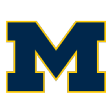
2. Michigan Wolverines: Charles Matthews looked like a star for the Wolverines, who made a run to their second national title game in five years, in the postseason. The 6-foot-6 wing entered last season's national title game averaging 16.6 PPG in the NCAA tournament before a subpar effort against Villanova in the championship matchup. Mo Wagner is gone, but Matthews leads a Wolverines crew that's capable of duplicating last season's top-10 defense as it chases a conference title.

3. Purdue Boilermakers: The Boilermakers lost four seniors who combined to average 48.8 PPG last season. But Carsen Edwards, the team's top scorer and the favorite to win Big Ten player of the year honors, is back after withdrawing from the NBA draft. He'll play a combo guard role for a team that needs big man Matt Haarms (2.1 blocks per game) and 6-foot-9 Dartmouth transfer Evan Boudreaux (17.5 PPG, 9.5 RPG last season) to complement his efforts and help Matt Painter's squad make a run at the league's crown.

4. Indiana Hoosiers: Romeo Langford could become the face of college basketball if he elevates one of the game's most recognizable programs into conference-title contention. The McDonald's All-American and projected top-10 pick in next summer's NBA draft could lead a Hoosiers squad that deserves more praise as a potential sleeper in this league. Archie Miller will have Langford, Juwan Morgan and De'Ron Davis, who expects to enter the year ready for competition after suffering a torn Achilles last season. When Miller was at Dayton, he reached the Elite Eight with less.
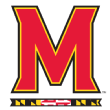
5. Maryland Terrapins: The lofty preseason projections about the Terrapins tend to emphasize the returns of Bruno Fernando, who withdrew from the NBA draft to build on last season, Anthony Cowan Jr. and five-star freshman Jalen Smith. It's important to note, Maryland was one of the worst defensive teams in Big Ten play, and that was with the services of first-round pick Kevin Huerter. Plus, Maryland finished 11-10 after Justin Jackson, who turned pro, suffered a season-ending shoulder injury in December, so we're hesitant to move Maryland any higher based on those realities.
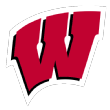
6. Wisconsin Badgers: Earlier this year, Greg Gard estimated that his team had played with a healthy roster for less than one-quarter of the 2017-18 season, which ended without an NCAA tournament bid and snapped a streak of 20 consecutive appearances. But Ethan Happ, an all-Big Ten first-team selection last season (media), withdrew from the NBA draft with a mission to boost his stock and help the Badgers return to the NCAA tournament and the top tier of the league. A healthy Wisconsin team might start 2018-19 the way it finished 2017-18, when it won four of its last six games and scored victories over Purdue and Michigan State.

7. Minnesota Golden Gophers: Richard Pitino's team was beset by injuries and personnel challenges, as Amir Coffey (14.0 PPG, 37 percent from beyond the arc) missed 14 games due to a shoulder injury and Reggie Lynch, the former Big Ten defensive player of the year, was suspended following a sexual assault investigation. Coffey is back, Jordan Murphy (16.8 PPG 11.3 RPG) is a star and the team has added Milwaukee grad transfer Brock Stull (13.4 PPG) and four-star forward Daniel Oturu. But that might not be enough to change the fortunes of a team that finished 13th in adjusted defensive and offensive efficiency in conference play last season.
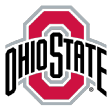
8. Ohio State Buckeyes: The surprise of the 2017-18 season turned a midsummer coaching change into a tie for second place in the Big Ten, conference player of the year honors for Keita Bates-Diop and an NCAA tournament appearance. But Chris Holtmann, Big Ten coach of the year, loses Bates-Diop and Jae'Sean Tate, a pair who anchored a team that finished top 25 in offensive and defensive efficiency last season. But returnees C.J. Jackson (12.6 PPG) and Kaleb Wesson (10.2 PPG), along with Wake Forest grad transfer Keyshawn Woods and top-100 prospect Jaedon LeDee, comprise a nucleus that has the potential to make Ohio State an overachiever again.

9. Nebraska Cornhuskers: Last season, the Cornhuskers finished with 22 wins and a 13-5 record in the Big Ten but failed to make the NCAA tournament in part because the league was weaker than expected but also because Tim Miles' team faced only Purdue, Michigan State, Michigan and Ohio State once in 2017-18. That impacted their league record. But James Palmer Jr. (17.2 PPG) and Isaac Copeland Jr. (12.9 RPG) return to lead a veteran roster that should position the program to compete for its first NCAA tournament appearance since 2014.
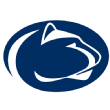
10. Penn State Nittany Lions: Had Tony Carr, a second-round pick by the New Orleans Pelicans in the NBA draft and Penn State's top scorer, decided to stay in school, the Nittany Lions would have entered this season as a top-25 team following last season's NIT run. But he's gone. Still, Pat Chambers' team returns three of its top five scorers from a season ago (Mike Watkins, Lamar Stevens, Josh Reaves) and has a chance to sneak into the top half of this conference.

11. Iowa Hawkeyes: Last season's 4-14 record in Big Ten play was the worst tally for the Hawkeyes since Fran McCaffery's first season in 2010-11 despite returning four starters from the previous season. This season, Tyler Cook (15.3 PPG) will lead a Hawkeyes squad with four double-digit scorers returning from that struggling team. If a horrible defensive unit -- Iowa finished 242nd in adjusted defensive efficiency -- fails to improve, McCaffery's team will repeat last season's problems.

12. Northwestern Wildcats: A year after leading Northwestern to the first NCAA tournament appearance in school history, the Wildcats were booted from their home floor and sent to Allstate Arena while Welsh-Ryan Arena underwent a $110 million renovation. It cost the Wildcats key momentum in a difficult season. Now that they're back on campus, a Northwestern squad with Vic Law and Dererk Pardon, a pair of seniors who combined to average 22.3 PPG, and a multitude of new faces will fight to keep Northwestern from the league's basement.
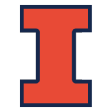
13. Illinois Fighting Illini: Ayo Dosunmu, a guard ranked 36th in the 2018 class by ESPN.com, will pair with Trent Frazier, who averaged 12.5 PPG and 3.1 APG last season, in one of the league's most intriguing backcourts. Dosunmu's arrival is a sign that Brad Underwood is moving forward in this rebuilding process. But 2018-19 could be another rocky year on that road.
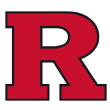
14. Rutgers Scarlet Knights: Prior to the 2014-15 season, Rutgers joined the Big Ten, a baffling move to anyone who wasn't a TV executive concerned about the league's broadcasting footprint or Jim Delany. Rutgers has finished last in the Big Ten every season since its arrival. Geo Baker (10.8 PPG) is back, but Rutgers will likely end the season in last place again.
